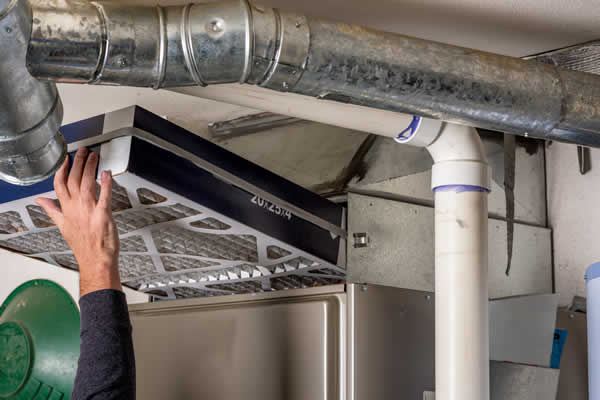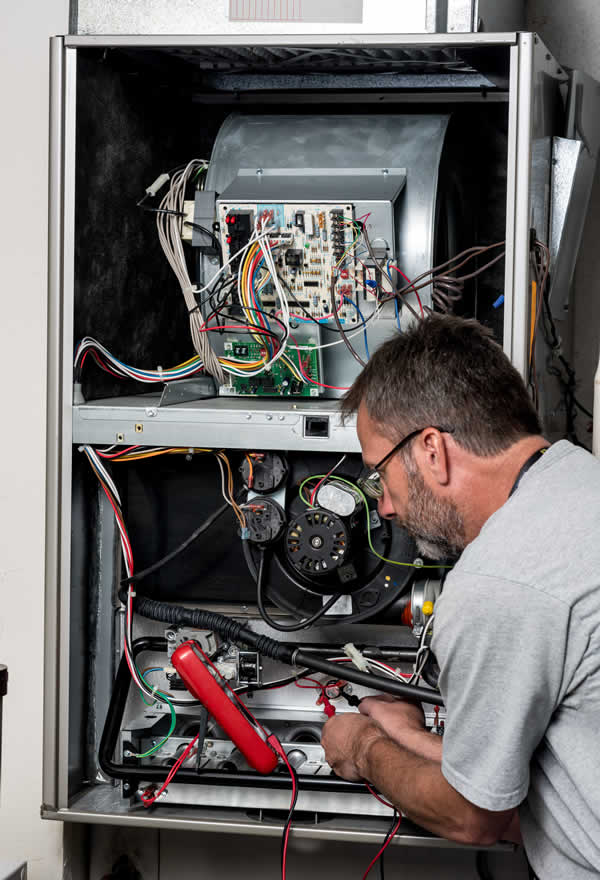A lot can happen during the warmer months and affect your furnace. As winter approaches, one important thing you need to do is ensuring that the furnace is safe, operational, and as energy efficient as it can get. When winter arrives, you don’t want to be hit by the unfortunate realization that the furnace isn’t working.

But how do you make your furnace ready for winter? Below are a few ways to prepare it to ensure that it operates optimally during the entire cold season.
Step 1: Inspect the thermostat
The first thing you need to do is check the condition of your thermostat. It’s crucial to switch the thermostat from cooling to heating before the cold season sets in. To do this, set the temperature slightly higher than the room temperature and wait to feel if the heat kicks in the first minute or so. A programmable thermostat can save you the work. (1)

If it doesn't work, check the connections to ensure that the power source to the system is turned on. You can also pull off the cover and inspect the wiring for any loose connections. If everything seems okay and the thermostat is still not working, call a professional.
Your furnace might have suffered damage to the blower, heat pump, or fan. Unless you’ve received training and can competently examine the cause for the malfunction on these parts, don’t attempt any do-it-yourself repairs.
Step 2: Change the air filters
The general rule is to replace your air filters at least once each season. During fall, the furnace filters collect dirt, dander, allergens, dust, and many other things. By the time that season ends, the filter is too congested to filter the air properly. The filters need to be clean for the air you breathe in the house to be safe and clean. (2)

Check the kind of filter your furnace needs and find a replacement at your local hardware. You need to know the precise size and type because getting one that doesn’t fit properly will lead to inadequate heating. It can also severely damage your heating system. It’s also important to consider the Maximum Efficiency Reporting Value (MERV) of a filter when buying.
This is a rating that assigns a filter’s efficiency in trapping particles in the air. A higher MERV value means that your heating unit will run more efficiently. But be sure to check for compatibility as well. If you select a filter with a MERV value that’s too high for your system, there may be an airflow restriction.
Step 3: Clean the vents
As with the filters, the vents also accumulate debris and dirt over time. If the buildup becomes significant, the openings become clogged and can trap heat inside, causing problems. You can eliminate these issues if you clean the vents regularly.
A wet cloth is enough to clean the dirt and dust particles on the surface. The purpose is to ensure that nothing is blocking airflow. It's also crucial to check whether the air duct seal needs changing to ensure that the air circulates evenly throughout your home.
Step 4: Remove nearby objects and cover the condenser
Before turning the heater on, move any objects around it and on top of it. Your furniture, boxes, or storage containers near your system might be blocking the heating vents. These objects may increase the risk of fire, so it’s only safe to keep them away for your home and family’s safety. (3)
If you have one of those traditional heating, ventilation, and air conditioning (HVAC) units, you might need to get a cover for the condenser, the outdoor part of the unit which collects or expels heat depending on the season. Covering it prevents ice from collecting inside, which can lead to damage. However, if you use a heat pump instead, don’t cover it as heat pumps work differently. (4)
Step 5: Test your furnace
The last and the most critical step is to test the furnace to ensure that everything is working as it’s supposed to before winter arrives. If you notice anything wrong, you’ll have enough time to consult a technician to get everything ready. Some common indicators that your system may require professional review include abnormal sounds.

Don’t ignore any rattling, banging, or other unrecognizable noise coming from the system. Also, if the thermostat is malfunctioning or the system doesn’t heat and you can’t see any obvious reasons for that, seek professional assistance.
Takeaway
Preparing your furnace in advance before the winter sets in is crucial to ensure that you don’t get unpleasantly surprised when it fails to work when you need it most. Checking it also gives you enough time to get it ready to keep running for the entire season. The increase in usage during this season may take a toll on your system. That’s why you need a professional opinion on what you need to do for a worry-free and warm winter.
References
- “Thermostats”, Source: https://www.energy.gov/energysaver/thermostats
- “6 Reasons Why You Should Change Your Furnace Filter Regularly”, Source: https://www.angi.com/articles/5-reasons-change-your-furnace-filter.htm
- “Preparing Your Furnace for Winter”, Source: https://www.nbcconnecticut.com/weather-news/stories/preparing-your-furnace-for-winter/2363218/
- “SHOULD I COVER MY HEAT PUMP IN WINTER?” Source: https://www.conditionedairsolutions.com/cover-heat-pump-winter/
